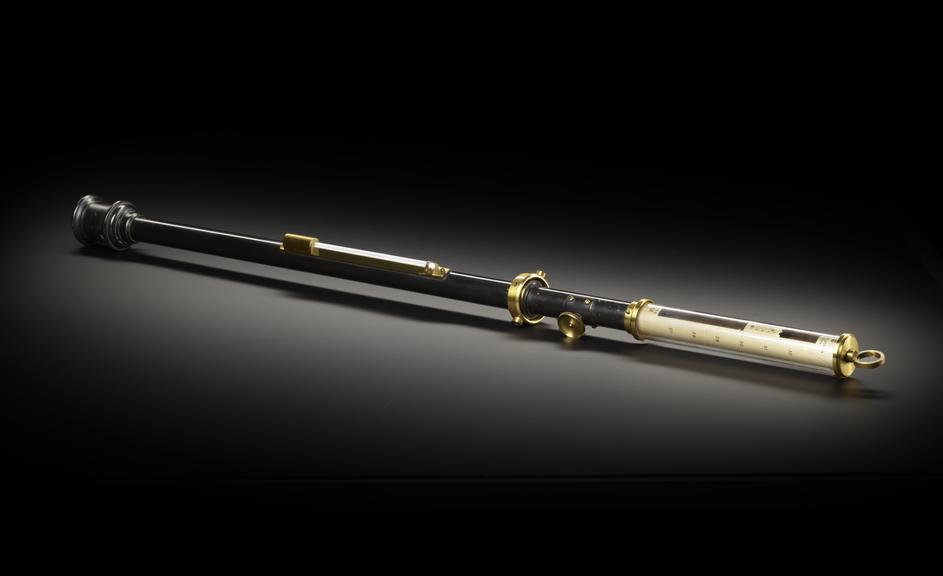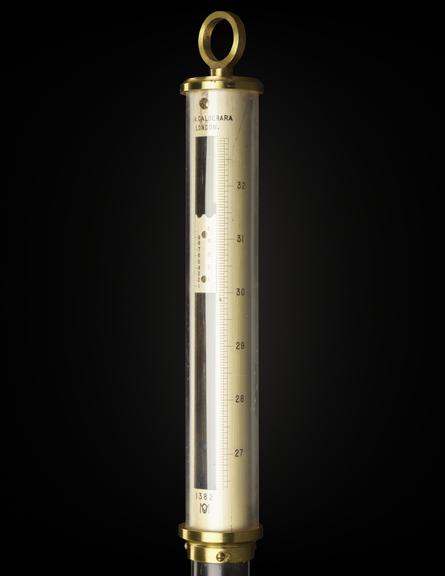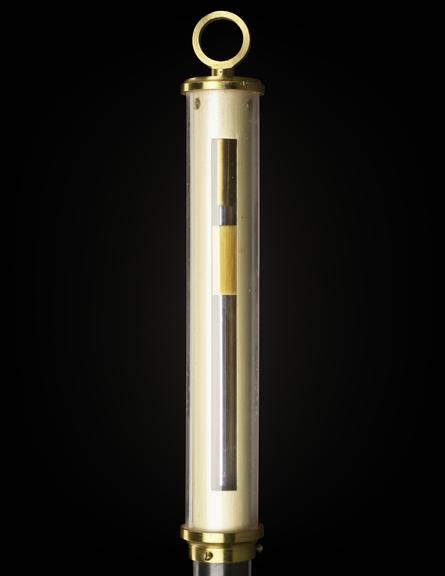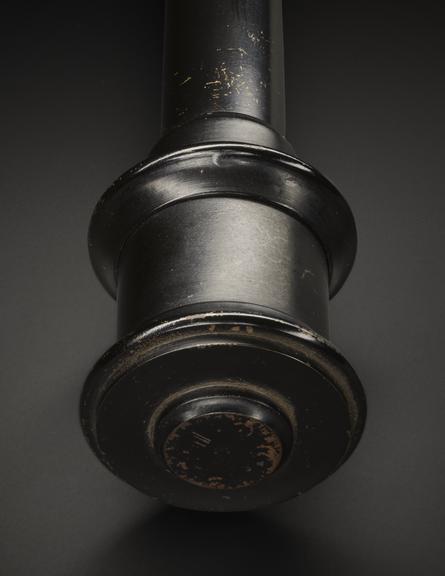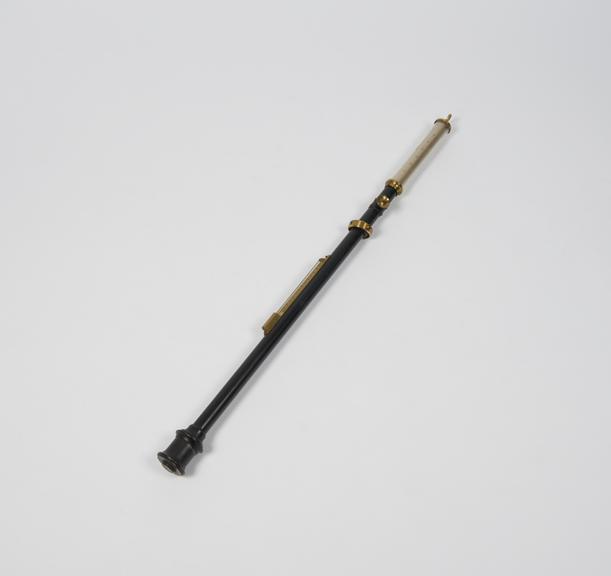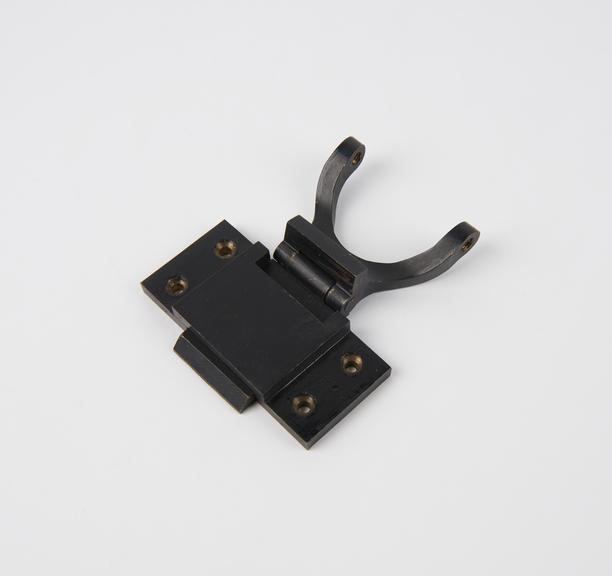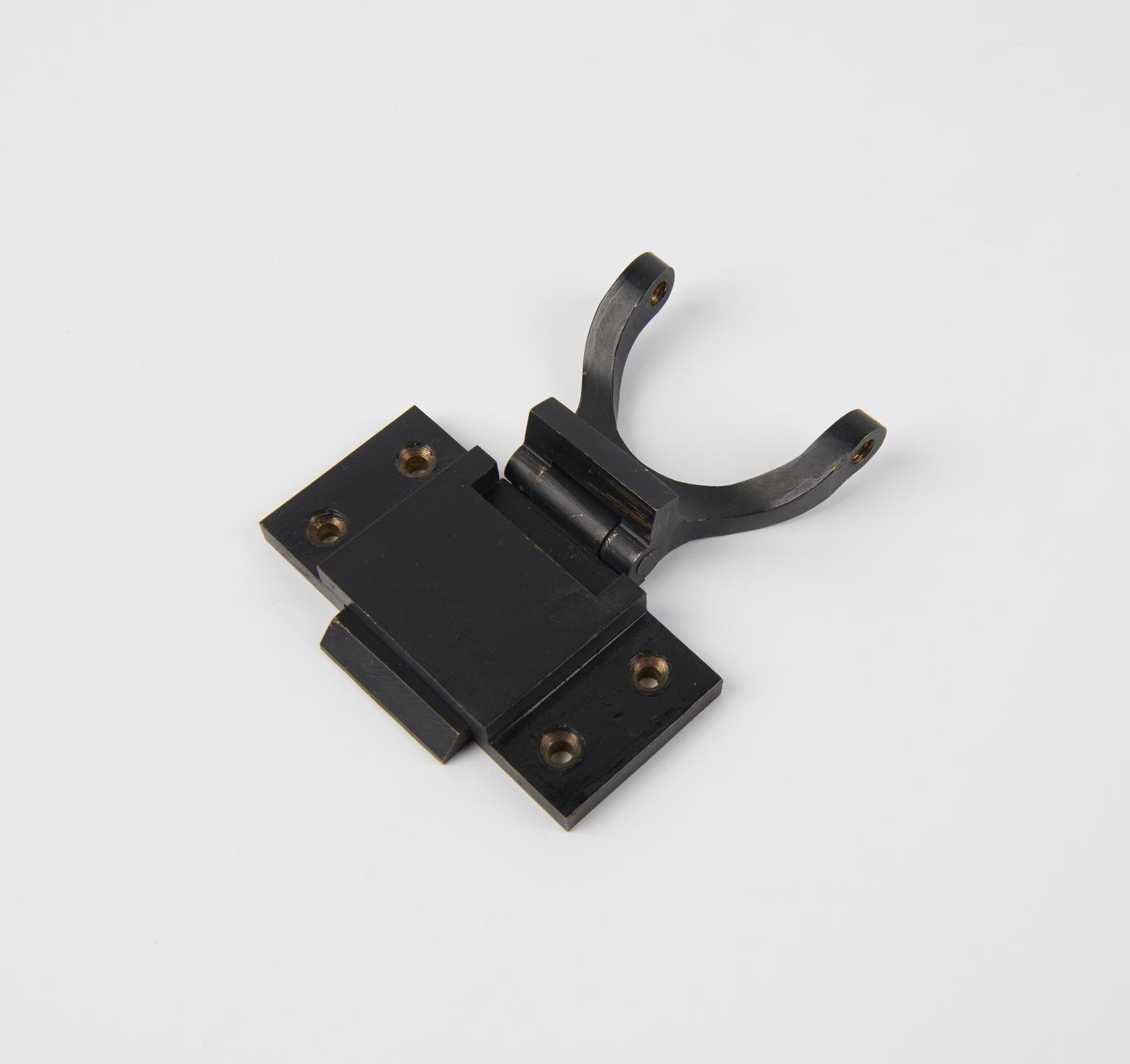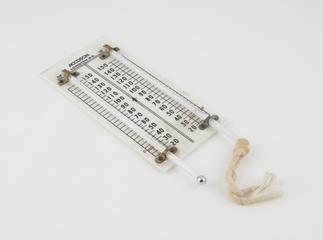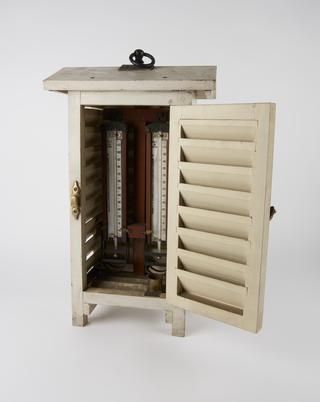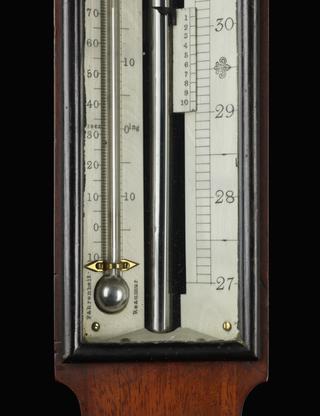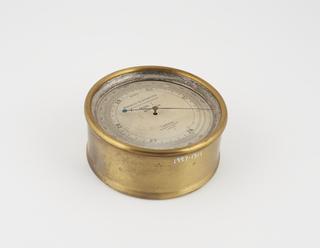Barometer, Kew pattern, for use at meteorological stations
Mercury fixed-cistern barometer, serial no. 1382 with Meteorological Office mark, for use in meteorological stations, Kew pattern, made by S. & A. Calderara, Springfield Gardens, Clapton, London, England, UK, 1914. The barometer scale is marked in centibars and has a vernier for precision readings. A mercury thermometer, marked in kelvins, is mounted on the outside of the case.
More
Kew pattern barometers are so-called because they were originally developed under the superintendence of the Kew Committee, a committee of the British Association for the Advancement of Science. The committee met at Kew Observatory, which from the early 1900s was administered by the Meteorological Office. Beginning with an initiative in the 1850s to develop a barometer for making accurate readings at sea, the Kew pattern barometers became standard instruments, widely deployed around the world in the 1800s and 1900s. A marine version is designed for use on board ships, whereas this model is for use at land-based meteorological stations.
- Measurements:
-
overall: 940 mm x 60 mm x 60 mm, 2.35 kg
- Materials:
- brass (copper, zinc alloy) , glass and mercury
- Object Number:
- 1914-312/1
- type:
- barometer
- Image ©
- The Board of Trustees of the Science Museum








